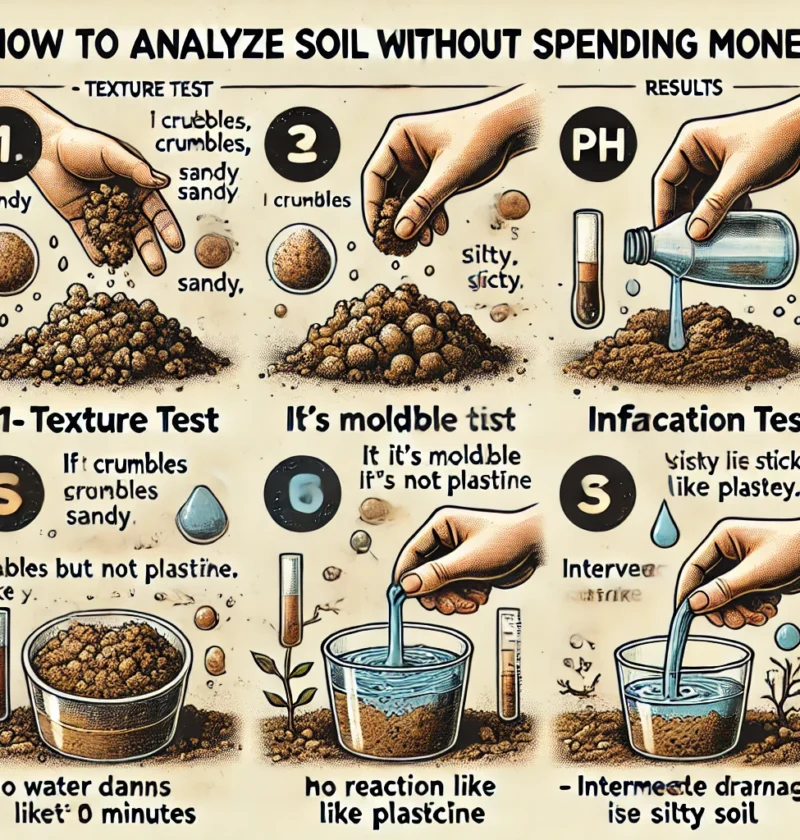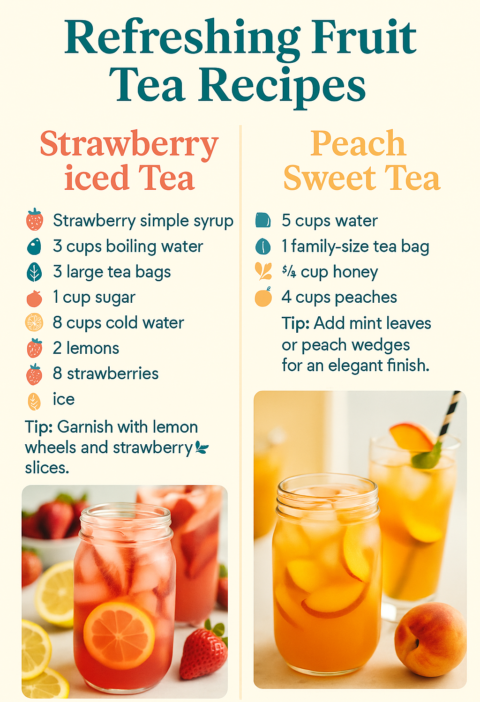Introduction
Soil quality plays a crucial role in successful gardening and farming. Understanding the texture, pH level, and water infiltration rate of your soil helps in selecting the right crops, optimizing irrigation, and improving plant health—without spending money on expensive tests!
In this comprehensive guide, you’ll learn three simple and effective ways to analyze your soil at home using basic household items. These tests will help you determine: ✔ Soil texture – Understanding drainage and root growth potential
✔ Soil pH – Essential for nutrient absorption
✔ Water infiltration – Helps optimize watering schedules
By the end of this article, you’ll have the knowledge to adjust your gardening practices for healthier crops and higher yields! 🌱✨
—
1️⃣ Soil Texture Test: Is Your Soil Sandy, Silty, or Clayey? 🏜️
Why it matters:
Soil texture determines how well your soil drains, retains moisture, and provides nutrients to your plants.
How to test soil texture:
Step 1: Gather Your Soil Sample
Take a handful of moist (not wet) soil from your garden.
Remove any rocks, sticks, or debris.
Step 2: Perform the Hand Test
1. Squeeze the soil in your palm and open your hand.
2. Observe how it reacts:
If the soil crumbles easily and feels gritty, it is sandy soil – great for plants needing excellent drainage, like carrots and cacti.
If the soil sticks together but breaks apart easily, it is silty soil – ideal for crops requiring balanced moisture, like tomatoes and leafy greens.
If the soil remains compacted and sticky, it is clay soil – good for water retention but may cause root rot in sensitive plants.
How to Improve Each Type of Soil
✔ Sandy Soil: Add organic matter (compost or peat moss) to enhance water retention.
✔ Clay Soil: Incorporate sand and compost to improve drainage.
✔ Silty Soil: Maintain by adding mulch and compost to keep it aerated.
—
2️⃣ Soil pH Test: Is Your Soil Acidic, Neutral, or Alkaline? 🧪
Why it matters:
Soil pH affects nutrient availability and determines which plants will thrive or struggle in your garden.
How to test soil pH:
Step 1: Collect Your Soil Sample
Place two tablespoons of soil into a small container.
Step 2: Add Vinegar
1. Pour white vinegar (5% acidity) over the soil.
2. Observe the reaction:
If the soil bubbles, it is alkaline (pH above 7) – Ideal for plants like lavender, asparagus, and kale.
If no reaction occurs, proceed to the next step.
Step 3: Add Baking Soda (If No Reaction)
1. Take a new sample of soil.
2. Add distilled water to make a mud-like paste.
3. Sprinkle baking soda over it.
4. Observe the reaction:
If the soil bubbles, it is acidic (pH below 7) – Suitable for plants like blueberries, azaleas, and potatoes.
If no reaction occurs, the soil is neutral (pH around 7).
How to Adjust Soil pH
✔ For Acidic Soil (Low pH): Add lime (calcium carbonate) to raise pH.
✔ For Alkaline Soil (High pH): Use sulfur or peat moss to lower pH.
✔ For Neutral Soil: Maintain it by adding compost and organic matter regularly.
—
3️⃣ Water Infiltration Test: How Fast Does Your Soil Drain? 💧
Why it matters:
Water infiltration affects how well plants receive moisture and prevents overwatering or root rot.
How to test water infiltration:
Step 1: Prepare Your Sample
Take a small container and fill it halfway with soil.
Step 2: Add Water & Observe
1. Slowly pour one cup of water over the soil.
2. Time how long it takes for the water to fully drain.
Understanding the Results
✔ Drains in under 1 minute: Your soil is sandy, drains too fast, and may cause drought stress in plants.
✔ Drains in 1-10 minutes: Your soil is silty, providing balanced moisture retention, ideal for most crops.
✔ Drains in over 10 minutes: Your soil is clayey, meaning it retains too much water, which can lead to root rot.
How to Improve Water Drainage
✔ For Fast-Draining Soil: Add organic matter (compost, peat moss, mulch) to increase moisture retention.
✔ For Slow-Draining Soil: Mix in sand, perlite, or gravel to enhance aeration and prevent waterlogging.
—
Final Thoughts: Adjust Your Soil for Healthier Plants! 🌱✨
Analyzing your soil without spending money is simple, effective, and essential for gardening success. With these easy DIY tests, you can determine:
✅ Soil texture – Helps you choose the right plants and irrigation methods.
✅ Soil pH – Ensures nutrient availability for maximum plant growth.
✅ Water infiltration rate – Prevents overwatering or under-watering issues.
Next Steps
🌿 Now that you know your soil type, adjust your gardening practices to improve plant health and yield!
🌱 Try these soil tests today and let us know your results in the comments!
🔄 Share this guide with fellow gardeners to help them maximize their soil potential! 🚀






